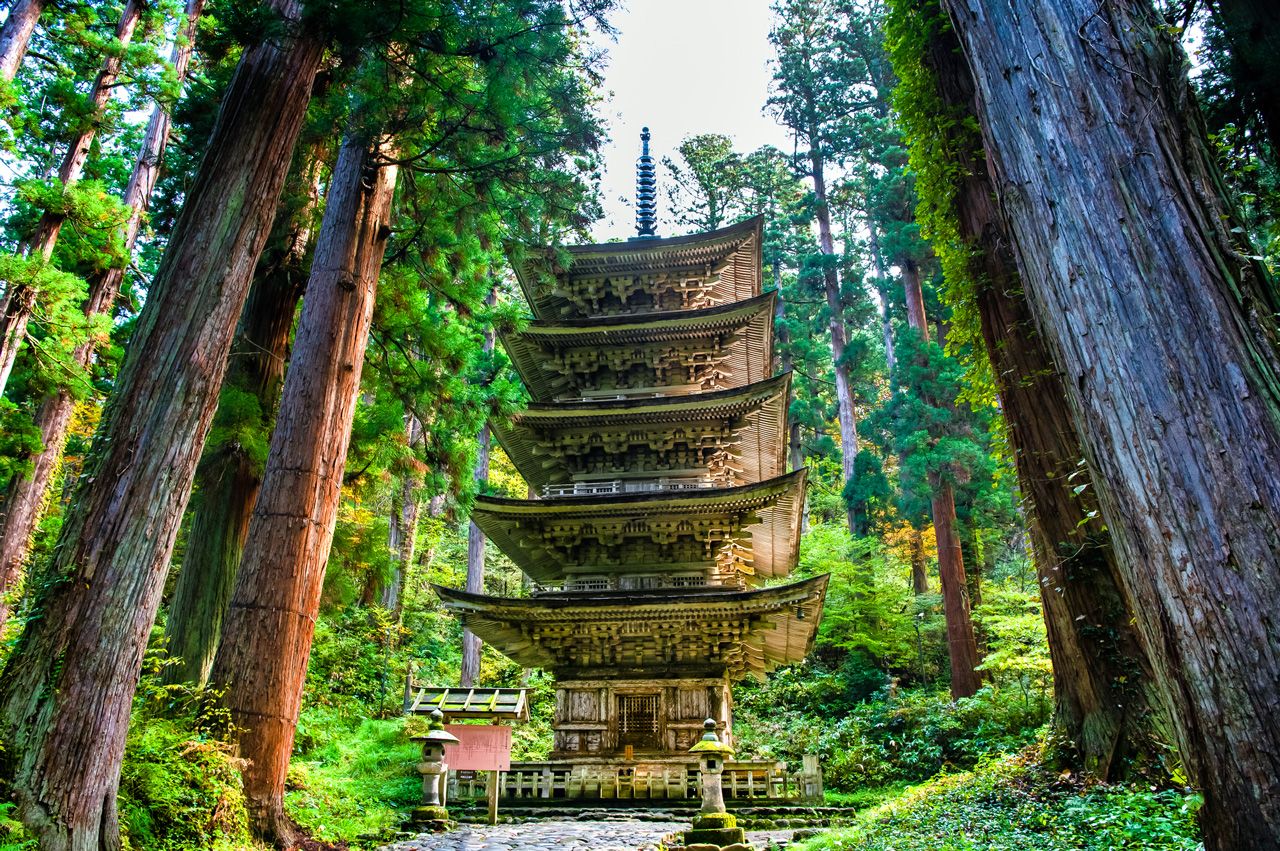Yamagata Prefecture
Prefecture
Banzai Japan
Idol Group
Visit there
Website
Snowy Yamagata Prefecture, in Japan’s Tōhoku region, is home to the Dewa Sanzan, three sacred mountains forming the core of one of the oldest religious traditions in the country.
Yamagata Prefecture, on the Sea of Japan coast in the Tōhoku region, lies south of Akita, west of Miyagi, and north of Niigata and Fukushima.
The ninth largest prefecture by area but just the thirty-fifth by population, it is a sparsely populated place featuring rugged mountains including the Dewa Sanzan, three peaks held to be sacred spots for practitioners of Shugendō, one of Japan’s oldest native religious traditions.
Yamagata Prefecture at a Glance
- Established in 1876 (formerly part of Dewa province)
- Capital: Yamagata
- Population: 1,068,000 (as of Oct. 2020)
- Area: 9,323 km2

The inland city of Yamagata, the largest in the prefecture, has just short of 250,000 residents calling it home. Tsuruoka and Sakata, on the northern coast, and Yonezawa in the south follow the capital in the population rankings, but Yamagata Prefecture as a whole is largely rural.
Fully 17% of the prefectural area falls inside of natural parks, and the eastern border of Yamagata runs along the Ōu Mountains, the longest range in Japan. In the far north of the prefecture is Mount Chōkai, its highest point at 2,236 meters in elevation.
The prefectural center, meanwhile, is the site of the northern Echigo Mountains, including Mount Gassan (1,984 meters), Mount Yudono (1,504 meters), and Mount Haguro (414 meters).
These are the Dewa Sanzan, the “three peaks of Dewa” where Shugendō retains a strong hold.
These mountains are also cherished by the relatively newer arrival of Buddhism; the Yamadera (“mountain temple”) complex of several dozen structures, formally named Hōjusan Risshakuji, was founded in 860 by Jikaku Daishi (794–864), then the head of Japan’s Tendai school of Buddhism.
An esoteric sect of the faith also produced the tradition of sokushinbutsu, in which monks committed themselves to mummification while still alive, seen most frequently in the temples of Yamagata.
The prefecture’s economy depends heavily on modern industries like communications and electronics devices and chemical products, building on a mining tradition that led also to a strong metal-casting industry from medieval times onward.
Yamagata remains known for its agriculture as well, though, in particular cherries (the prefecture grows around 70% of the national total) and Yonezawa wagyū beef, one of the top local appellations in Japan.
The area became much more accessible from Japan’s main population centers in 1992, when the Yamagata Shinkansen was opened as far as the prefectural capital; in 1999 the line was extended as far as Shinjō in Yamagata’s north.
This spur line parts from the main Tōhoku Shinkansen route at Fukushima Station to bring passengers across the spine of Honshū to the island’s west.
Kitekero-kun, the Yamagata prefectural mascot, has a name that means “Please come on up!” in the local dialect of Japanese. Kitekero-kun has a face shaped like Yamagata and wears a hat decorated with the prefecture’s famed cherries.
Famous Figures
- Ogata Taketora (1888–1956): Journalist and politician. Was the chief editor of the Tokyo Asahi Shimbun in the prewar and early wartime era, as well as vice president of the newspaper publisher; turned to politics thereafter, serving in the cabinets of Koiso Kuniaki (1944–45) and Higashikuni Naruhiko (1945). Was purged from politics under the Allied Occupation but returned to serve in the cabinet of Prime Minister Yoshida Shigeru in 1952–53.
- Inoue Hisashi (1934–2010): Writer. Established his fame as a playwright, launching his own theater troupe, the Komatsuza, in 1983, but was also an accomplished novelist, winning the Naoki Prize in 1972 for Tegusari shinjū(Handcuffed Double Suicide) and both the Yomiuri Prize for Literature and the Japan Science Fiction Grand Prize in 1981 for Kirikiri-jin (The People of Kirikiri).
- Katō Kōichi (1939–2016): Politician. Born in Aichi, Katō grew up in Yamagata and represented the prefecture in the Diet for most of the period from 1972 to 2012. In 2000, following the death of Prime Minister Obuchi Keizō, launched “Katō’s rebellion” against the caretaker prime minister, Mori Yoshirō, but was driven from the political sphere for a time after its failure.
https://www.youtube.com/watch?v=dYxK4SPZKOE
